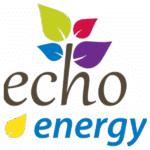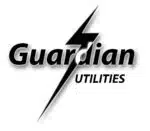How the Solar Club Works: Pros and Cons, and Options
Albertans across the province have really taken to solar. According to the AESO, Albertans installed over 100 MW of solar micro-generation capacity in 2024, and now the province has over 335 MW of micro-generation capacity, with over 33,000 different micro-generation sites producing their own electricity. There are many reasons why solar has been winning so many Albertans over:
- Abundance of sunlight: Alberta has the highest number of sunny days in Canada on average.
- Higher electricity costs: Alberta has some of the highest electricity costs in Canada.
- A deregulated electricity market.
These factors have made many Albertans consider taking their electricity into their own hands by installing solar. Another truly unique case for Albertan micro-generators is the existence of the Solar Club™. Albertan micro-generators have found this program has decreased their power bills significantly, decreasing the total repayment time on their solar installation, and saving them more money down the line.
What is the Solar Club?
The Solar Club is a “loyalty program” available to commercial, residential, or agricultural micro-generation sites in Alberta that is designed to incentivizes small-scale solar micro-generation. The Solar Club is operated by UTILITYnet, which is then distributed to micro-generators through one of many UTILITYnet’s Community Energy Marketers.
The Solar Club provides a method for small micro-generators to maximize their solar generation through two differently priced electricity rates. Just like any grid-tied solar installation, excess energy not used is sold back to the grid, in exchange for bill credits. Where the Solar Club is unique is it offers two rates – the HI rate and the LO rate – for summer months and winter months, or times when your solar generation exceeds your usage and those times when solar generation falls below your usage, respectively.
In the winter months, when micro-generators across the province are generating the least of their energy throughout the year, the rate is a low, competitive electricity rate. However, during the summer months, when micro-generators are at their peak production, this rate is much higher.
Since energy sold by the micro-generators must be equivalent to the cost that the microgenerator would spend on electricity, the microgenerator earns more credit during times when they are exceeding their energy usage, like during the sunniest times of the year. In the situation where you generate more energy than you use during the summer months, this means you maximize your surplus energy while on the high rate and then switch to the low rate during before winter comes.
- HI rate – when solar production is high, like during summer months. 33.0 cents / kWh on a 1 or 3 year term.
- LO rate – when solar production is low, like during winter months. 6.89 cents / kWh on a 1 year term, or 7.99 cents / kWh on a 3 year term.
Many Albertans who have installed solar photovoltaic have found switching between the Solar Club rates have been able to reduce their energy bills greatly in the winter months.
Pre-Solar Rate
The Solar Club does not just offer savings for Albertans that have their panels fully-installed and operational; the Pre-Solar Rate™ allows Solar Ready™ people who have just started their solar journey to start saving on their electricity rate. To qualify as Solar Ready, you must have signed the contract to have a Solar PV system installed, or have the installation completed but have not met other criteria to designate your site as a micro-generation site.
The current Pre-Solar Rate is 6.74 cents / kWh.
Considerations of the Solar Club
You might be excited at the prospect to join the solar club, but the reality is that not everyone will be able to benefit from it. The primary consideration one should make is if your solar production is projected to be higher than your energy usage during the spring and summer months.
Since the cost of electricity you import is same as the export rate, you can see expensive power bills come your way if you end up producing less electricity than what you end up using while on the high rate. If your solar production does not overall exceed your energy consumption during the summer months, then the solar club is not for you.
A solar installation that produces 70% of the total yearly electricity for a home, farm or business will overall likely be a net exporter during summer months. To be sure, we recommend you check the information that was provided in your quote before signing up with a Solar Club.
During the summer, when your excess generated solar energy is sold back to the grid, you will earn credit to go towards a future energy bill equal to the Solar Club high rate.
Conditions of the Solar Club
The Solar Club is available to all Albertans – with two exceptions.
- Residents of Medicine Hat
Medicine Hat is exempt from the Solar Club, due to the city generating and distributing their own electricity. However, the city offers microgenerators offers a Solar Electric Incentive Program in lieu.
- Rural Electricity Agreements
Including REAs of the following regions: Peigan REA, Ermineskin REA, Wild Rose REA, Lakeland REA, North Parkland Power REA, and Blue Mountain Power Co-Op.
Other than those exceptions, there are some conditions that your system will need to meet to join. The Solar Club is only applicable to small microgenerators – systems with a nameplate capacity of less than 150 kw – that are net billed by a bidirectional interval meter to identify both how much electricity to import from and export to the grid. According to the AUC, your local Wire Service Provider is required to install a bidirectional meter free of charge, with some exception.
One last stipulation of the Solar Club: any prospective member must make a donation to their local food bank.
When to switch between solar club rates?
The Solar Club retailers are usually quite flexible when it comes between switching between rates. You can change rates once per billing cycle, and the provider of the Solar Club will typically need just 10 business days to switch between rates.
However, one thing that is important to consider is when to make the change between the rates. A couple weeks of cloudy weather could put your production behind your consumption, leading to an expensive electricity bill instead of a large credit in return.
One way the Solar Clubs has improved the switching experience is that the retailers provide retroactive switching of the rates, as far back as your last billing cycle.
Suggested times to be on each Solar Club rate:
- Spring to summer – approximately April to September
- Fall to Winter – approximately October to March
Who offers the Solar Club?
Since the Solar Club is operated by UTILITYnet, there is not much difference between the different Energy companies that offer the Solar Club to microgenerators. Both the high rate and the low rate of the Solar Club will be the same, as they are set by UTILITYnet, and there are few differences between the selling points, either. Many of the marketers that offer the Solar Club offer the same, if not similar:
- 3% cash back on energy imports from the grid.
- Cheap Pre-Solar Rates for people planning on installing Solar.
- The ability to sell your Carbon Offsets.
In conclusion, while you should still shop around when looking for a solar club retailers, the differences between the retailers are at the margins. Below are some of the highest rated energy marketers that offer the solar club – for a more comprehensive look, check out the complete list.
| Retailer | Link |
 | Visit Abode Power |
 | Visit Acorn Energy |
 | Visit Adagio Energy |
 | Visit Airdrie Energy |
 | Visit Alberta Utility Source |
 | Visit Ascend Energy |
 | Visit Azgard Energy |
 | Visit Big Rock Power |
 | Visit Bow Valley Power |
 | Visit Brighter Futures Energy |
 | Visit Camrose Energy |
 | Visit Echo Energy |
 | Visit EMPWR |
 | Visit Firefly Utilities |
 | Visit Fluent Utilities |
 | Visit Foothills Energy Co-op |
 | Visit Get Energy |
 | Visit Great Canadian Utilities |
 | Visit Greenamp Utilities |
 | Visit Guardian Utilities |
 | Visit Headwater Utility |
 | Visit Jade Energy |
 | Visit Mountain View Power |
 | Visit Neon Power |
 | Visit Orizon Utilities |
 | Visit Park Power |
 | Visit Peyakoskan Energy |
 | Visit Ridge Utilities |
 | Visit Rocky Mountain Community Energy |
 | Visit Sandstone Energy |
 | Visit Shared Value |
 | Visit Solarmax Power |
 | Visit SpotPower |
 | Visit Sundance Power |
 | Visit Tassa Energy |
 | Visit Utilities by Kuby |
 | Visit UTILITYnet.ca |
 | Visit Vector Energy |
 | Visit Wetaskiwin Power |
 | Visit Wholesale Power |
Is the solar club here to stay?
The Solar Club is possible because of the current rules regarding Microgeneration in Alberta. Since laws and regulations surrounding Microgeneration can change at the government’s behest, there is no guarantee that the Solar Club is going to be a permanent fixture of Alberta’s energy future. With that being said, there is no known upcoming changes to the laws relating to microgeneration. Since the AESO has approved the Solar Club high rate until 2028, we are confident that the Solar Club will be around for the next three years at minimum.











